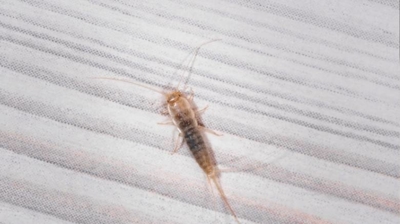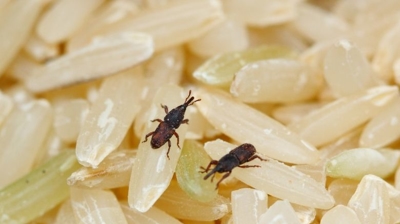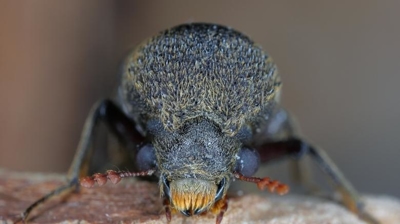
German Cockroach Control Services

German Cockroaches
German cockroaches (Blattella germanica) are dangerous, not because these cockroaches pose a direct physical threat to humans, but due to several health and hygiene risks associated with their presence. Here's why German cockroaches are considered dangerous:
- Disease Transmission: German cockroaches are known to carry and transmit various pathogens, including bacteria, viruses, and parasites. They can pick up these microorganisms from their scavenging activities in unsanitary environments, such as sewers and garbage, and then transfer them to food, food preparation surfaces, and other surfaces in homes and businesses.
- Allergen Production: The feces, shed skin, and saliva of German cockroaches contain proteins that can trigger allergic reactions and exacerbate respiratory conditions, especially in people with asthma. Exposure to these allergens can lead to symptoms such as coughing, wheezing, skin rashes, and nasal congestion.
- Contamination of Food and Surfaces: Cockroaches are known to forage for food at night and hide in cracks and crevices during the day. As they move, they leave behind excrement, shed skin, and other waste products, contaminating food, utensils, and cooking surfaces. This contamination can lead to foodborne illnesses if ingested.
- Rapid Reproduction: German cockroaches are prolific breeders. A single female can produce hundreds of offspring in her lifetime. Their fast reproductive rate can lead to rapid infestations, making it challenging to control their populations once established.
- Property Damage: Cockroaches can cause damage to books, fabrics, and even wallpaper by feeding on or chewing these materials. Additionally, their droppings and secretions can stain and produce foul odors.
- Stress and Mental Health: The presence of cockroaches in homes and businesses can lead to significant stress and mental health issues. The stigma and psychological distress associated with a cockroach infestation can impact the well-being of individuals.
- Resilience and Adaptability: German cockroaches are known for their resilience and adaptability. They can develop resistance to various pesticides over time, making their control more challenging.
- Prolonged Infestations: If left unchecked, cockroach infestations can persist and worsen, making it increasingly difficult and expensive to eradicate them. This may require our professional pest control services.
German cockroaches are considered dangerous because they can transmit diseases, trigger allergic reactions, contaminate food and surfaces, reproduce rapidly, cause property damage, contribute to stress and mental health issues, and are challenging to eliminate once established. Prompt and effective pest control measures are essential to mitigate the risks associated with these pests.
Learn more: Do German Cockroaches Bite?
German Cockroach Removal
German cockroaches (Blattella germanica) are considered one of the most troublesome pest species worldwide, and getting rid of them is crucial for several serious reasons:
- Health Risks: German cockroaches are notorious carriers of pathogens. They can spread bacteria such as Salmonella, E. coli, and Staphylococcus, which can cause food poisoning, gastrointestinal illnesses, and other infections. Their saliva, feces, and shed skins contain allergens that can trigger asthma attacks, respiratory issues, and allergic reactions, particularly in children and sensitive individuals.
- Rapid Reproduction: These cockroaches reproduce at an astonishing rate. A single female can produce hundreds of offspring in just a few months. This exponential growth means a small infestation can quickly become a major problem, making early intervention critical to prevent widespread contamination.
- Food Contamination: German cockroaches are attracted to human food and can contaminate it with bacteria, pathogens, and allergens. Even packaged food can be compromised, especially if it’s stored improperly. This can create serious health hazards in homes, restaurants, and food-handling establishments.
- Structural and Material Damage: While they don’t chew through wood like termites, German cockroaches can damage paper products, fabrics, and certain household items by feeding on them. Their sticky feces can stain walls, surfaces, and fabrics, creating unsightly and unhygienic conditions.
- Difficult to Control Once Established: German cockroaches are extremely adaptable and resilient. They can survive on tiny amounts of food and water, hide in small crevices, and resist many conventional pesticides. Once an infestation becomes established, it can be very difficult and expensive to eradicate without professional intervention.
- Psychological Stress: Infestations can cause significant stress and anxiety. The sight of cockroaches triggers fear and discomfort for many people, and knowing they are contaminating your living space can be emotionally taxing.
- Regulatory and Reputation Concerns: In commercial settings like restaurants, hospitals, and food storage facilities, the presence of German cockroaches can lead to violations of health codes, fines, or even closures. They are considered a major indicator of poor hygiene and can damage a business’s reputation.
German cockroaches aren’t just a nuisance—they are a serious public health threat and a rapidly multiplying pest. Early detection and comprehensive eradication are essential to protect health, property, and peace of mind.
Learn more: How To Get Rid Of German Cockroaches
German Cockroach Control
Hiring our professional pest control for German cockroaches is the most effective and long-lasting solution because of how difficult and persistent these pests are. German cockroaches reproduce at an alarming rate—one female can produce thousands of offspring in just a year—and they are highly adaptive, quickly developing resistance to many over-the-counter sprays and DIY treatments. This makes home remedies or store-bought products ineffective in the long run, often allowing the infestation to worsen behind walls, under appliances, and in hidden cracks.
We use advanced techniques, targeted insecticides, and specialized equipment that homeowners don’t have access to. More importantly, we understand cockroach biology and behavior, which allows them to locate hidden nesting areas, cut off food and water sources, and apply treatments strategically for maximum impact.
In addition to eliminating the current infestation, our professionals implement preventive measures to reduce the risk of future outbreaks. This not only saves time, money, and frustration but also protects health. German cockroaches are notorious carriers of bacteria, allergens, and pathogens that can trigger asthma, contaminate food, and spread illness.
German Cockroach Exterminators
Hiring our local exterminators over a national company for German cockroach control offers several significant advantages that can directly impact the effectiveness, cost, and speed of eradication:
- Tailored Local Expertise: Our local exterminators have deep knowledge of regional pest behaviors, climate influences, and infestation patterns. German cockroach populations vary by area in terms of resistance to certain insecticides or preferred hiding spots. Our local professionals understand these nuances and tailor our treatments for maximum effectiveness. National companies often rely on standardized protocols that do not account for local variations and resistances.
- Faster Response Times: Infestations can escalate rapidly because German cockroaches reproduce extremely quickly. Our local exterminators are geographically closer and more flexible, allowing for quicker inspections, treatments, and follow-ups. National companies often have scheduling delays, giving the infestation time to grow.
- Personalized Service and Follow-Up: Our local exterminators are a small team, which means you often get direct communication with the person handling your treatment. We are motivated to ensure long-term success because our reputation is directly tied to your satisfaction. National companies often assign multiple technicians over time, which can dilute accountability and consistency.
- Use of Appropriate, Targeted Methods: German cockroaches are highly adaptable and may have developed resistance to certain common insecticides. Our local exterminators pay attention to what works best in the area and employ integrated pest management (IPM) strategies—a customized combination of baits, monitoring, sanitation, and targeted chemical use—rather than a one-size-fits-all approach.
- Ongoing Support and Long-Term Solutions: Because our local team depends on word-of-mouth and repeat customers, we provide more comprehensive services and follow-ups, and are willing to adjust treatments as needed. National companies sometimes have rigid service protocols and are often less flexible with additional treatments outside the standard plan.
- Community Accountability: Our local exterminators are part of your community—we rely on local reputation and trust. This drives us to deliver superior service and maintain higher standards compared to national chains, which often prioritize corporate protocols and efficiency over results and customer service.
- Environmental Awareness: Our local team has better knowledge of local regulations and environmentally safe practices, ensuring treatments are safe for your household, pets, and neighbors. National companies may use generic chemical applications without accounting for sensitive local ecosystems or ordinances.
Our local exterminators provide rapid, tailored, and accountable service, often at a better cost and with higher long-term effectiveness, making them the smarter choice for controlling fast-spreading German cockroach infestations.
What Do German Cockroaches Look Like?
German cockroaches (Blattella germanica) have distinctive physical characteristics that help distinguish them from other cockroach species. Here's a description of what German cockroaches look like:
- Size: German cockroaches are relatively small compared to other cockroach species. They typically measure between 1/2 to 5/8 inch (12 to 15 millimeters) in length.
- Color: They are usually light to medium brown, but their color can vary from tan to almost black. One of the key identifying features is two dark, parallel stripes running lengthwise on their thorax (the segment just behind the head), which are more pronounced in younger nymphs.
- Body: German cockroaches have a flattened, oval-shaped body with long, segmented antennae. Their wings, though they have them, are not well-developed for flying, and they primarily rely on running to move.
- Head: Their head is concealed from above, and they have prominent, large, and dark eyes. The mouthparts of German cockroaches are adapted for chewing.
- Legs: They have six legs that are well-suited for scurrying around on various surfaces. The legs have small spines that help them cling to surfaces, including vertical and inverted ones.
- Antennae: German cockroaches have long and segmented antennae that are sensitive to touch and help them navigate their environment.
- Wings: Adult German cockroaches have wings, but they are typically unable to fly. The wings are short, and they mostly use them for gliding short distances or as a defense mechanism.
These physical characteristics make German cockroaches easily distinguishable from other cockroach species, and their distinctive parallel stripes on the thorax are a key identifying feature. Recognizing their appearance is important for effective pest control and identification when dealing with a potential infestation.
Where Are German Cockroaches Found?
German cockroaches, or Blattella germanica, are highly adaptable pests known for their ability to thrive in a variety of indoor habitats. You may find German cockroaches in the following types of environments:
- Residential Homes: German cockroaches are commonly found in houses, apartments, and other residential buildings. They prefer warm and humid areas, such as kitchens and bathrooms, where they can easily access food, water, and hiding spots.
- Restaurants and Food Service Establishments: Restaurants, cafes, and commercial kitchens are prime habitats for German cockroaches due to the abundance of food crumbs and grease. They can infest food storage areas, pantry shelves, and behind appliances.
- Hotels and Lodging: Hospitality establishments with kitchens and common dining areas are at risk of German cockroach infestations. They can also hide in luggage and bags, potentially spreading to other locations.
- Grocery Stores and Supermarkets: German cockroaches can be found in food retail environments, especially in storage areas and around food displays. Their presence in these establishments can lead to contamination of food products.
- Hospitals and Healthcare Facilities: Hospitals, clinics, and nursing homes can also be vulnerable to German cockroach infestations, as these pests can hide in cracks and crevices, potentially spreading disease and allergens.
- Schools and Educational Institutions: Educational buildings can harbor German cockroaches, particularly in areas with cafeterias and food storage. The presence of cockroaches in schools can pose health risks to students and staff.
- Commercial and Industrial Facilities: German cockroaches can be found in non-food related commercial and industrial settings, where they may hide in warm, dark, and moist areas such as basements, crawl spaces, and utility rooms.
- Retail Stores: Retail environments, including clothing stores and department stores, can also experience infestations. Cockroaches can hide in stockrooms and behind displays.
- Public Transportation: In some cases, German cockroaches may infest public transportation systems, such as buses and trains, and can hide in cracks and crevices within vehicles.
- Multi-Unit Housing: Apartment buildings and other multi-unit housing structures are especially vulnerable, as cockroaches can easily move between units through wall voids and plumbing.
German cockroaches are drawn to environments that provide access to food, water, and shelter. They thrive in areas with high humidity, so proper sanitation, exclusion, and regular cleaning are essential for preventing and managing infestations in these habitats. Our professional pest control may be required for severe or persistent infestations.
Learn more: Can German Cockroaches Fly?
What Do German Cockroaches Eat?
German cockroaches (Blattella germanica) are opportunistic feeders and will consume a wide range of food sources. They are omnivorous and are often attracted to human food and other organic materials. Here's what German cockroaches commonly eat:
- Food Scraps: German cockroaches are notorious for scavenging in kitchens and other food-related areas. They will eat virtually any leftover food scraps, including crumbs, bits of fruit, vegetables, and meat.
- Grease and Oils: They are attracted to greasy residues, such as those found on stovetops, in deep fryers, and on kitchen appliances. Grease and oil are not only a food source but also a hiding place for them.
- Starchy Foods: Cockroaches have a particular preference for starchy foods, including cereals, pasta, bread, and grains.
- Sugary Foods: Sweets and sugary items like sugar, syrup, honey, and candy can attract German cockroaches.
- Pet Food: They may feed on pet food left out in dishes, particularly if it is not stored properly.
- Paper and Cardboard: German cockroaches can consume paper and cardboard products, such as packaging, books, and even wallpaper. They are attracted to these materials because they contain cellulose and can provide sustenance.
- Soap and Glue: They are known to eat soap residues, glue, and adhesive substances. This can be problematic in bathrooms and storage areas.
- Decaying Matter: German cockroaches are scavengers and will feed on decaying organic matter, such as dead insects, plant material, and even their own shed exoskeletons.
- Human Hair and Fingernails: In some cases, they may nibble on human hair and fingernails if these are soiled or contain skin oils.
- Crumbs and Food Residue: Even tiny food particles and residues left on countertops, floors, and kitchen appliances can be a food source.
To effectively control and prevent German cockroach infestations, it's essential to maintain good sanitation practices. This includes regularly cleaning and removing food sources, sealing food containers, and addressing any moisture issues. By eliminating their access to food and water, you can discourage their presence and make your home or establishment less attractive to these pests.
German Cockroach Life Cycle
The life cycle of German cockroaches (Blattella germanica) consists of several stages, each with its own characteristics and duration. Understanding this life cycle is crucial for effective pest control. Here's a description of the life stages of German cockroaches:
- Egg Stage: German cockroach eggs are laid in protective cases called oothecae, which are purse-shaped and dark brown. Each ootheca contains multiple eggs, usually ranging from 30 to 40 eggs. The female carries the ootheca until it is ready to hatch, which typically takes a few weeks.
- Nymph Stage: When the eggs are ready to hatch, the nymphs emerge from the ootheca. Nymphs are miniature versions of the adult cockroach but lack wings and are lighter in color. German cockroach nymphs undergo a series of molts, shedding their exoskeleton as they grow. They go through several instars (stages) before reaching adulthood, typically five to seven instars. Nymphs are wingless and become progressively darker as they mature.
- Adult Stage: Adult German cockroaches have fully developed wings, but they are poor fliers, primarily using them for gliding. They are sexually active and capable of reproducing. Adults have a lifespan of several months to up to a year, depending on factors like environmental conditions and predation.
The life cycle of German cockroaches is influenced by temperature, humidity, and the availability of food and water. They are prolific breeders, with each female capable of producing several oothecae in her lifetime. This rapid reproductive rate is one of the reasons why German cockroach infestations can become severe in a short amount of time.
To effectively manage German cockroach infestations, it is essential to break the reproductive cycle by eliminating both adults and nymphs, as well as their food and water sources. This often requires a combination of sanitation, pest control methods, and, in severe cases, the expertise of professional pest management services.

Hear From Our Happy Customers
-
"Exceeds Expectations"
I can’t say enough positive things about this company... The tech that came out, Jarvis went above and beyond my expectations. Thank you guys, I will continue using your services.
- Jake M. -
"Wonderful Service"
Wonderful service. Jarvis is great. Took care of everything I needed. Thank you!
- Henry P. -
"Fantastic & Patient"
Jarvis was fantastic and patient. He answered my questions with an in-depth explanation and addressed all of my areas of concern. Would love for him to be my assigned tech going forward. Well done!
- Yonnette M. -
"Very Knowledgeable"
The tech that arrived was courteous, professional, and very knowledgeable. He was Great.
- Uerial I. -
"Great Communication"
Tech was on time, communication was great, and he accommodated my needs.
- Alonzo W. -
"Professional & Considerate"
I’m pleased with Miche services. Jarvis came today. Professional and considerate. Thank you!
- Judy B.



